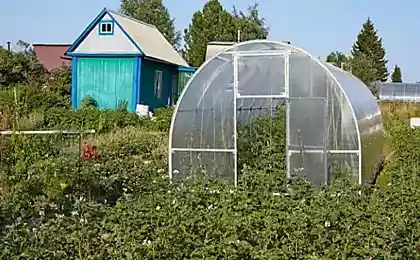388
Myths, legends and interesting facts about the butterfly “Dead Head”
It would seem that the mystical can be in an ordinary butterfly? And what could make her afraid? When it comes to the butterfly Acherontia atropos, which is also called “Dead Head” or “Adam’s Head”, this is not surprising.
Fictions, superstitions and interesting scientific facts about the “Dead Head” Around this representative of the Lepidoptera are many myths and legends caused by the unusual appearance of the insect. The main “highlight” of Acherontia atropos is the color of the breast, which surprisingly resembles the image of the human skull. Such a joke of nature and became the reason that scientific facts about this butterfly are studied much less often than various myths.
The same pattern on the back of a butterfly, resembling a human skull, which has kept many people at bay for a long time. Photo by Pablo MDS.
Truth: What is worth knowing about an insect? To begin with, even the name of this Lepidoptera was chosen on the basis of Greek myths. In fact, the name of the insect is combined with the names of what instilled terror in the inhabitants of ancient Greece - the cold river of sorrow, Acheron, which circles the gloomy underworld, and moira Atropos, which inexorably cut the thread symbolizing human life.
The butterfly "Dead Head" in all its glory. Photo by Jose Ramon P.V.
"Adam's head" refers to the family of burglars. The butterfly has a fairly large size - the span of its wings varies from 13 to 15 cm. For Europe, this insect is one of the largest.
The caterpillar Acherontia atropos is quite difficult to meet, it usually spends most of its life underground and gets out only for food, often only part of the body of the caterpillar will climb to the surface and eat the greens that it is able to get. But it is also found on plants, in particular in its diet prefers nightshade and root vegetables of other families (potatoes, carrots), plants whose leaves are available at a minimum distance from the ground. The caterpillar will come out of the mink, eat and hide again.
Dead Head butterfly caterpillar. Photo by Eduardo Marabuto.
Externally, the caterpillar of the "dead head" is also very spectacular, firstly, it has an impressive size - there are specimens 13 or more centimeters long. Secondly, its body can be divided into three parts, each of which is not similar to the other – on the tail there is a specific “tail” – a horn curved twice and resembling the letter of the Latin alphabet – S. The middle part consists of segments, the surface of which is decorated with many spot spots of blue or black color, and closer to the back of the interspersion form a kind of angular pattern that only this type of caterpillars possesses. The head part is less interesting, consists of three segments of a uniform color. In general, the caterpillar of the dead head is painted in one light green, salad color of tonality, with minor color changes on the tail and front parts of the body. The caterpillar also pupates underground, at this stage it winters, and in the spring from the pupa “dresses” into a full-fledged butterfly. This chic butterfly can be seen in various parts of the world: from Africa and Turkey to Madagascar and Crimea, and even Iceland. By the way, these insects periodically migrate, making quite long flights (and why not, if the speed of their flight is about 50 km / h - the thug "Dead Head" record for the speed of flight among butterflies!). And they squeak very peculiarly, and how insects manage to make this sound is unclear even to scientists.
The size of this caterpillar is impressive. Photo by Laszlo Bolgar.
You should know that the highest chances are close to view the Dead Head in the evening and at night (until midnight). They, by the way, can be lured by the light of a candle, a flashlight. And they eat, in particular, honey. To get it, Acherontia atropos resort to “tactical tricks” – they produce special substances that do not allow bees to “calculate” strangers by smell, penetrate the hive and, having pierced the walls of honeycombs with their proboscis, suck nutritious honey out of it. If the cunning is revealed, then from the bites of the bees, the burglar saves a thick hair cover. By the way, there is an opinion that the beekeeper allows you to freely penetrate into the beehive precisely the picture of the skull on the back, allegedly it resembles the appearance of the bee queen, as a result of which the bees do not prevent the butterfly from enjoying honey.
Twilight descends and the night butterfly “Adam’s Head” will soon wake up. Photo by Lepsibu.
The unusual “appearance” of the insect served as a source of inspiration for Edgar Poe, who, having “meeted” the “Dead Head”, wrote the story “The Sphinx”, in which the hero’s fantasy turns a harmless insect located next to him into a kind of fantastically unsympathetic creature crawling along the slopes of the mountains.
The "Adam's Head" marathon. Photo by Milan Duniskvaric.
The cinema was not left out either. The legendary film “Silence of the Lambs” is complemented by a line about how a maniac uses a doll Acherontia atropos – puts it in the mouth of the victims.
In the daytime, the “Dead Head” is sleeping “dead sleep”. Photo by Eduardo J Castro.
Several centuries ago, it was these insects who were blamed for the spread of epidemics and believed that scales caught in the eyes could cause vision to disappear.
In Russia, for a long time it was believed that, having seen the “Dead Head”, it must be killed, so that none of the loved ones died.
No less original misconceptions existed in Europe. So, in Lincolnshire, the author of the book The Antiquary residents of a village reported that the caterpillar "Dead Head" will soon be transformed into a mole. In England, it was believed that the “Adam’s Head” was used by soothsayers. Allegedly, they understood the squeak that these insects make, and can understand from it the names of people who are destined to leave the world of the living in the near future.
Macroshot of the butterfly "Dead Head" - the facet eyes of the insect and short thick antennae are clearly visible. Photo by f.scatton.
Due to the fact that the signs with this charming butterfly were not the most positive, in many places of its habitat began the real persecution, the result of which was that in many countries “Dead Head” became a rarity and listed in the Red Book. But now we know that she is not to be feared! It's better to just look at it!
Elena Samoylova, Kirill Usanov
Source: natureworld.ru/























